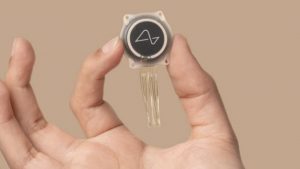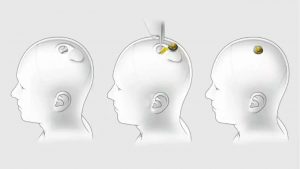A “Mind-Boggling” First Step for Musk & Neuralink
Mark Walier
Tech Editor
In a groundbreaking leap toward the future, Elon Musk’s Neuralink has ventured into uncharted territory by implementing its revolutionary technology in the first human volunteer. As the boundaries between science fiction and reality blur, the question on everyone’s mind echoes through the corridors of innovation: Is the future already upon us, and what profound implications does this frontier hold for the collective human experience? Regardless, technology continues to progress at an exponential pace as Musk continues to push the limits of what we believe is possible.

On January 28th, the first human patient received an implant from brain-chip creator Neuralink. This comes shortly after the company announced its receipt of FDA approval for human trials. Neuralink’s clinical trial is named PRIME (Precise Robotically Implanted Brain-Computer Interface). The trial is currently searching for volunteers experiencing quadriplegia, a spinal cord injury, intending to test the chip’s ability to help paralyzed individuals. The procedure employs a robotic system to surgically place the wires of the implant into a specific region of the brain associated with movement. “Initial results show promising neuron spike detection,” Musk said in a post on X last Monday. According to the National Institute of Health, spikes are described as the activity of neurons that use electrical and chemical signals to send information around the brain and to the body. If you’re uninterested in the tech breakdown, the long and the short of it is: Neuralink’s ability to help those with paralysis is showing promising signs in its early stages.
The first product from Neuralink would be called Telepathy. But, what are the company’s plans beyond the horizon? Elon Musk openly shares his ambitious plan to provide a way for humans to wirelessly connect their brains to internet devices. “Imagine the joy of connecting with your loved ones, browsing the web or even playing games using only your thoughts,” Neuralink said in a promotional video. Additionally, Musk has previously shared his goals of developing a “neural lace” with the ability to merge artificial intelligence and add a symbiotic digital layer to the human brain.

Despite the excitement, Neuralink’s mission remains controversial. 2022 and 2023 reports claim that the company’s methods inflicted harmful consequences on monkeys and other animals involved in testing, suggesting that up to 12 monkeys were euthanized during the research process. Luckily, Musk always knows how to respond with elegance, claiming that “no monkey has died as a result of a Neuralink implant,” adding that in early tests, “to minimize risk to healthy monkeys, we chose terminal monkeys”.
As we stand at the precipice of a technological revolution, Neuralink’s initial step into uncharted territory prompts a consideration of the implications that future technology has on the human experience. The blurring lines between science fiction and reality compel us to wonder whether we are moving towards a utopian future, or, if the relentless pursuit of innovation has pushed technological boundaries too far. As students enter the world of tomorrow, this milestone encourages us to engage in critical discussions about the ethical, societal, and personal dimensions of technological progress. The choices made today will undoubtedly shape the trajectory of tomorrow’s technological landscape, emphasizing the need for active participation and thoughtful consideration in shaping the world we want to live in.
Contact Mark at mark.walier@student.shu.edu

